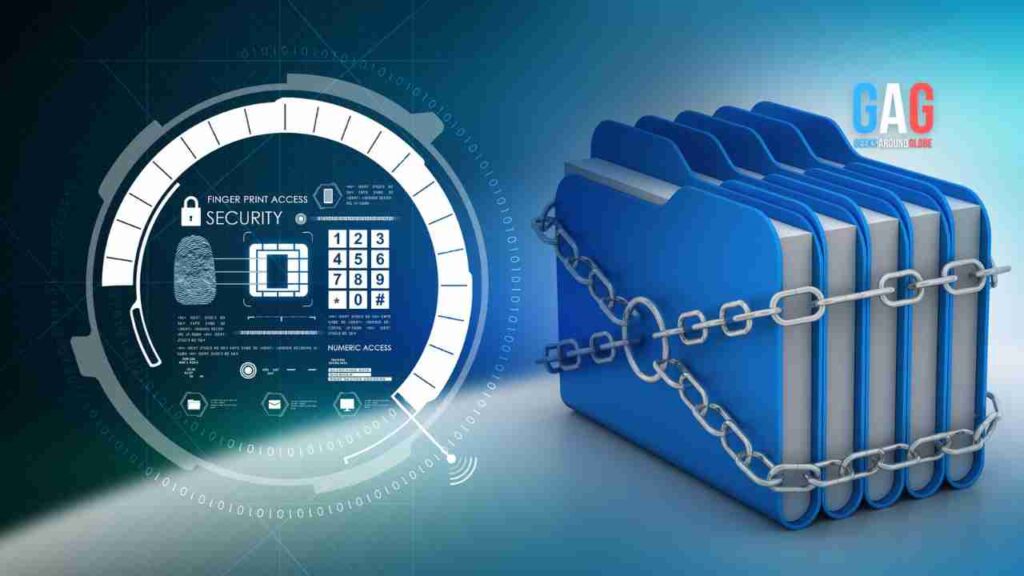Maximizing Document Security With PDF Encryption Tools

In the age of digital information, securing sensitive documents is paramount. While there are various ways to protect digital files, PDF encryption stands out for its effectiveness in preserving the integrity and confidentiality of data. The goal is not just to encrypt but to maximize security, ensuring that documents are as tamper-proof as possible. This article will explore how to achieve this.

- Strong Encryption Level Is Key
Navigating PDF encryption requires a deep dive into the different levels of encryption available. Even with the range of PDF editor free tools available, not all offer the same level of encryption. Encryption strength is primarily determined by two factors: the algorithm and the key length.
For optimal security, opt for Advanced Encryption Standard (AES), widely recognized for its robustness. The larger the key size, the harder it is for unauthorized entities to break the encryption. Therefore, while 128-bit key sizes are strong, 256-bit keys offer even more substantial protection.
- The Importance Of A Solid Password
A chain is only as strong as its weakest link, and in encryption, that link is often the password. No matter how robust the encryption level is, if the password is weak or easily guessable, the encryption becomes virtually useless. Crafting a strong password entails:
- Combining uppercase and lowercase letters.
- Incorporating numbers and special characters.
- Ensuring it’s not a common word or easily guessable phrase.
- Making it at least 12 characters long.
Remember, a strong password not only protects against manual guessing attempts but also makes brute force attacks, where software tries millions of password combinations, far less effective.
- Tailored Permissions For Enhanced Protection
One of the most nuanced aspects of PDF encryption is the ability to set specific permissions. These permissions can restrict actions such as editing, copying, or printing the document. By limiting these capabilities, you ensure that even if someone gains unauthorized access to the document, their ability to misuse or replicate the content is significantly reduced. Fine-tuning permissions to suit the nature of the document and its intended audience can greatly enhance overall security.
- Staying Updated
The digital landscape is in constant flux. New vulnerabilities are discovered regularly, and hackers are always on the lookout for potential exploits. Therefore, updating any software or tools used for PDF encryption is imperative. Regular updates fix known vulnerabilities, making sure that the encryption remains as secure as current technology allows.
- Watermarking
While watermarking doesn’t inherently stop someone from accessing a file, it adds a layer of deterrence against unauthorized distribution. Watermarks are visible marks or patterns overlaid onto the document, often containing information about the document’s origin or ownership. An unauthorized distribution of a watermarked document can be traced back to its source, making malicious actors think twice before sharing.
- Setting An Expiry Date
Certain sensitive documents only remain relevant for a specific duration. For such documents, setting an expiry date can be an effective security measure. After the specified date, the encrypted document cannot be opened, rendering it obsolete. This function is especially useful for time-sensitive documents or those shared with individuals for temporary access.
- Two-Factor Authentication
Two-factor Authentication (2FA) is a security protocol that requires users to present two separate verification methods to confirm their identity. Incorporating 2FA when accessing encrypted PDFs significantly bolsters security. Even if malicious actors obtain the password, without the second verification method—which could be a text message, an authentication app, or a biometric factor like a fingerprint—they remain locked out.
- Safeguarding Backups
Backing up important files is a universally recommended practice. However, when dealing with encrypted PDFs, it’s crucial to securely store the backup files. Whether choosing physical storage or cloud-based solutions, verify that the storage medium offers its encryption, adding an extra layer of protection to the already encrypted document.
- Educating And Training
Securing encrypted PDFs isn’t just an individual effort—when part of a larger group or organization, it’s a collective responsibility. It’s imperative to ensure everyone handling sensitive documents understands the importance of encryption and how to use tools safely. Regular training sessions, workshops, and awareness programs can instill a culture of security, minimizing potential lapses.
- Safe Transmission Practices
The security of encrypted PDFs isn’t just about how they’re stored but also how they’re transmitted. Sending encrypted documents over insecure channels can expose them to potential threats. Always opt for secure file-sharing services or encrypted communication platforms to maintain the integrity of the encryption during transmission.
- Testing
After implementing all the security measures, it’s advisable to test the encrypted PDF. Attempt to open it without the password, try to extract content if copying is restricted or even print if that function is limited. Testing ensures that all security parameters work as intended and provides an opportunity to rectify any overlooked vulnerabilities.
Final Thoughts
As data breaches and cyber threats are becoming increasingly sophisticated, taking proactive steps to secure sensitive documents is necessary. One can ensure that documents remain confidential, secure, and tamper-proof by harnessing the power of PDF encryption tools and understanding their intricacies.
From strong encryption levels to tailored permissions, every layer of protection counts. As with all cybersecurity endeavors, the goal is to implement security measures and continually evolve them in response to the ever-changing threat landscape.



